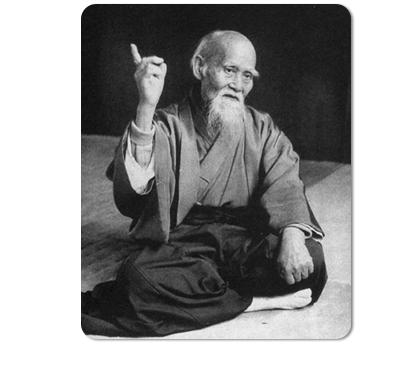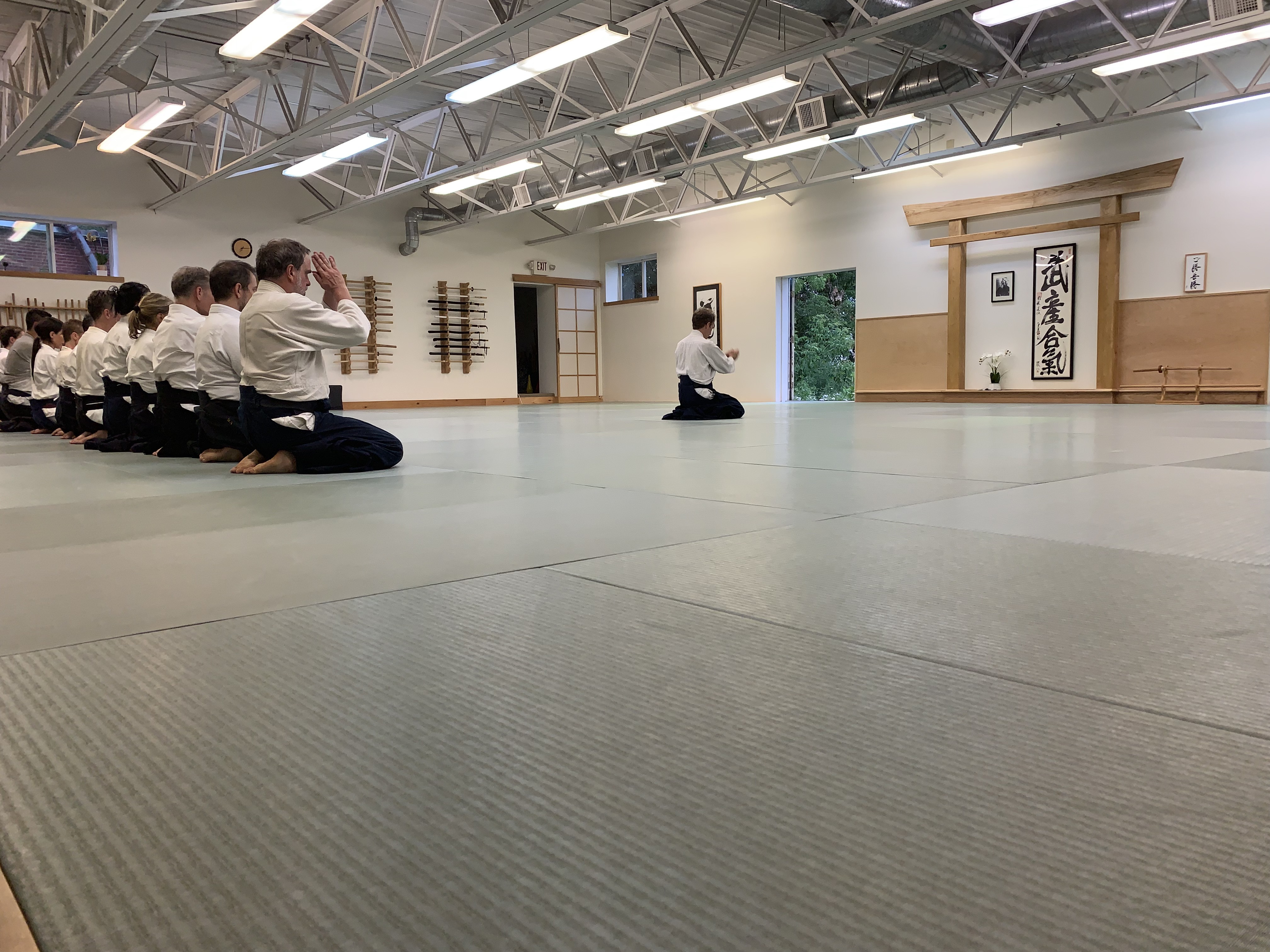
Mistugi Saotome Sensei, a live in student of the founder, when asked about “secrets of Aikido” said: “There is no secret, I can do it, and you can do it.” I understand this as “don’t get attached to the mysterious.” With that simplicity and transparency in mind, this article focuses on looking for plain words to talk about what it means to “defeat the mind of contention” and the road that leads to it. How can we communicate about physical, mental and spiritual changes that occur as we train Aikido and progress beyond winning and losing?
What exactly does it mean to “defeat the mind of contention” in Aikido?
I reached out to Bill Gleason Sensei regarding the above quote to see if he thought anything had gotten lost in its translation. In his words “no contests” means no formal competition although O’Sensei also said that we had to defeat the “mind of competition” in ourselves as well.” I assume that O’Sensei’s words apply also to informal competing, resisting or forcing as we practice.What is the mind of contention (or competition)? I think it refers to seeing interactions through the glasses of winning and losing. It reflects a desire to dominate, and a fear of failure. Working on transforming those attitudes and feelings is as or even more important than learning techniques and other physical aspects of training. O’Sensei’s words point to a level of practice that goes deeper than just physical exercise. One way to look at it is that the goal of Aikido practice is to end the preoccupation with winning or losing. Focusing on defeating the opponent or avoiding conflict keeps us trapped in the “mind of contention.”
Since Aikido is a martial art, a challenge is to end conflict in response to an attack. In other words, the goal is to be able to enter a situation where there is fighting, and be able to respond in a way that leads to its resolution, rather than avoid it or focus on “winning.” That kind of response requires a shift from insecurity of seeing the attacker as someone threatening to viewing them as someone out of balance, and resorting to “attack.” It requires confidence that there is no need for competition. Both parties can succeed, since we trust that there are plenty of resources to go around. Manifesting the mind of no contention is based on realizing a level of connection between ourselves, others, and Nature, where conflict doesn’t make sense.
Defeating the mind of contention is not synonymous with denial. It goes deeper than superficial peacefulness. Gleason Sensei says that “The reason O’Sensei forbid competitive matches isthat the throws in Aikido would constantly lead to serious injury, and therefore there would have to be restrictive rules. In other words, Aikido would become a sport, rather than a pure form of Budo.” In an article, based on an interview with Saotome Sensei, Guy Hagen talks about Sensei’s emphasis on “koppo”, or battlefield techniques, necessary in life or death situations. That competence then allows for a choice not to hurt one’s partner.
Knowing how to protect oneself allows for the peaceful side of Aikido to emerge. It requires technical proficiency as well as facing feelings of anger or fear, and attitudes of inferiority or superiority. Aikido practice provides a way of working through them, allowing for a shift where winning is no longer the goal. It’s a process, in which we constantly work with our feelings, attitudes and physical responses to polish our practice. We can’t deny them, but we can continue letting Aikido movement and it’s philosophy guide us in developing body and mind that is not preoccupied with winning or losing.
How does Aikido practice help us reach that goal of “defeating the mind of contention?”

It’s definitely easier said than done. Letting go of winning and losing is a gradual process. Aikido movement in itself offers a physical practice of “no contention.” In order to do it well, one is encouraged to stay in tune with their practice partner. It means feeling the direction and strength of the attack and developing it in a way that leads to a throw or pin. Forcing and pushing one’s partner are discouraged, and replaced by connected and sensitive movement that combines the attacker’s and defender’s energy and goals. In other words, practice of Aikido techniques promotes development of an attitude of no contention by constantly trading fighting for connection, sensitivity and skillful judgement.
In addition to physical practice of no competition, Aikido is also a psychological and spiritual practice focused on developing an attitude that promotes conflict resolution. Saotome Sensei often talks about perception of our partner and the situation we are in, as dictating our judgement and movement. It takes time to develop the ability to perceive different aspects of the attack to choose the best course of action. Without the agenda of winning, we are better able to perceive different aspects of the situation, without getting tangled in fighting. It’s a process of shedding competitiveness, where the aggression and fear are slowly replaced with the ability to be present in the moment.
Although the goal of this article is to find plain English words to describe Aikido practice,looking at Japanese terms “Misogi” and “Shugyo” can be helpful. The concept of “Misogi”, or purification seems important in understanding developing the mind and body of “no contention.” It involves transforming one’s movement through intense practice. It’s more than just exercise, where hard work and sweat are involved. There is a principle of “no contention” guiding physical, mental and spiritual practice of Aikido. It adds to the process of letting go of fighting with ourselves and others.
The term “Shugyo”, translated as deep mind-body training, comes to mind as a way of describing the process of “defeating the mind of contention.” Even though it sounds severe, it is often joyful and energizing. Shedding focus on winning and losing can be freeing and empowering at the same time. Letting go of competing allows greater capacity for conflict resolution. Reaching that goal requires physical, mental and spiritual discipline, and for most of us, many years of training. Each person has their own path, but moving beyond competing can be a deeply satisfying, life-long pursuit.
Thanks to my fellow Aikidoka: Julie Tolen, Gary Small, Meghan Reedy and Jean-Francois Cloutier for their help with editing and questions regarding content.
Ania Small Ph.D.
Ania teaches Aikido at Aikido of Maine and is a licensed psychologist in private practice in Freeport Maine.
Links:

Recent Comments